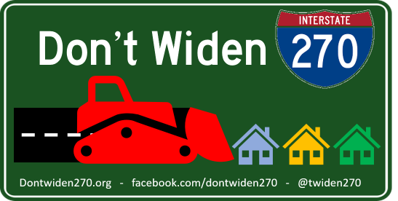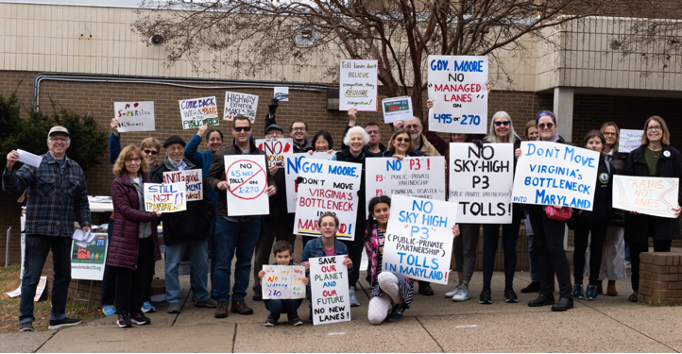It’s time for our governor to tell the public and our elected representatives exactly where the administration is going with its plan for a big “something” based on Larry Hogan’s massively flawed toll lane project. Moore is now asking the General Assembly to approve another $107 million (p. 300) taxpayer dollars for toll lane planning and engineering (separate from the billions eventually needed for construction). We have questions.
What is the administration’s actual project plan?
MDOT marketing makes it easy to think the project is mainly about public transit. But public transit accounts for only 3% of the project budget.
The same marketing makes it easy to shift focus away from toll lanes benefiting only the wealthiest. But MDOT’s application for federal funding (p. 14) makes it clear this is still Hogan’s plan as it was approved in August 2022, with all the inequities and harms intact.
The administration is not candid about specifics of project scope, design, and implementation. Does or doesn’t the toll lane plan include lower I-270? What would replace the American Legion Bridge (which is not falling down). One span? two? How will construction be phased? Which acres of trees, which community sound walls would come down? And on and on and on.
Where will all the money come from?
The project’s Phase 1 budget (p. 10) is over $4 billion. MDOT’s request for $2.4 billion in federal dollars was turned down this year. MDOT Secretary Wiedefeld threw cold water on public-private-partnership funding: “The reality is taxpayers are still going to pay” (see “Wiedefeld Explains” here). And the state has a serious transportation funding deficit.
There’s no money for the Moore-Hogan toll lane project now, and no guarantee there will be money next year.
Moore can turn this around by taking action in the public interest.
Right now, our governor faces widespread public, county, and General Assembly dismay over cuts to transportation projects statewide. He also faces growing opposition to the unworkable toll lanes. Instead of diverting $107 million to keep the toll lane plan in a holding pattern for another year, Moore can:
Remove the $107 million from his budget and use that bucket of funds towards restoring and expanding critical transit/transportation projects across the state.
Announce the end of this toll lane project as part of a realignment of state transportation policy with Moore’s key administration goals: environmental action, equity, and connecting people with jobs.
Look to the smart, effective alternatives already on the table for the I-270/I-495 corridor (see here and here and here).
Prioritize transportation planning and genuine transit alternatives for I-270 North.
Continue seeking federal funding to repair and redeck (resurface) the American Legion Bridge, rather than unnecessarily replacing it.
Action Item
Write to Gov. Moore to urge him to end the Moore-Hogan toll lane plan now, while the General Assembly is considering the new state budget. Ask him to use the $107 million currently designated for toll lane planning/engineering to instead help fund projects that actually meet transportation needs across the state. In your own words, explain why you don’t want the Moore-Hogan plan to move forward. You can find links to an array of ideas and resources in recent DontWiden270.org newsletters.
To take action, click here, select “Transportation” from the dropdown menu, and write your message to Gov. Moore. Thank you.



